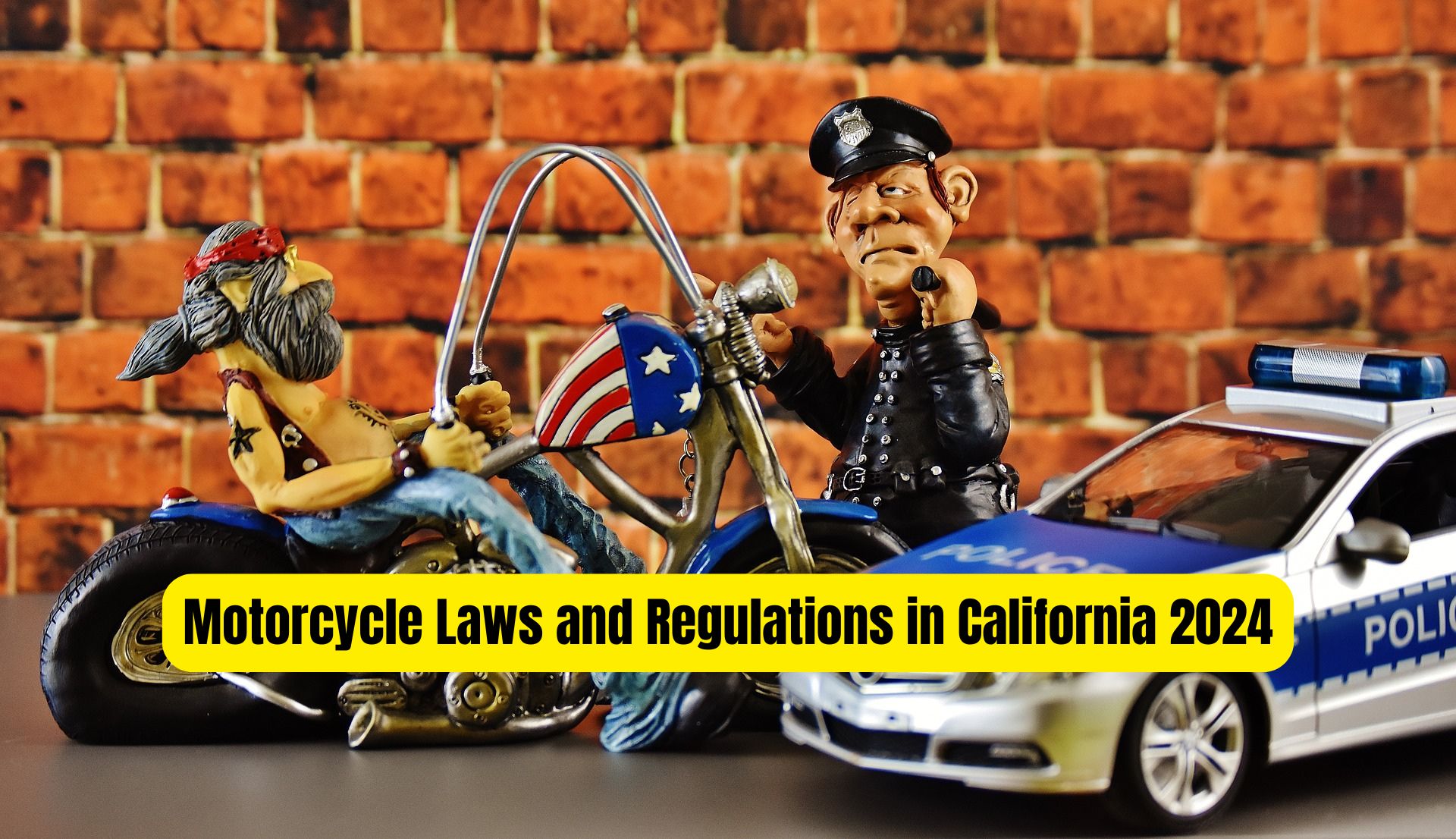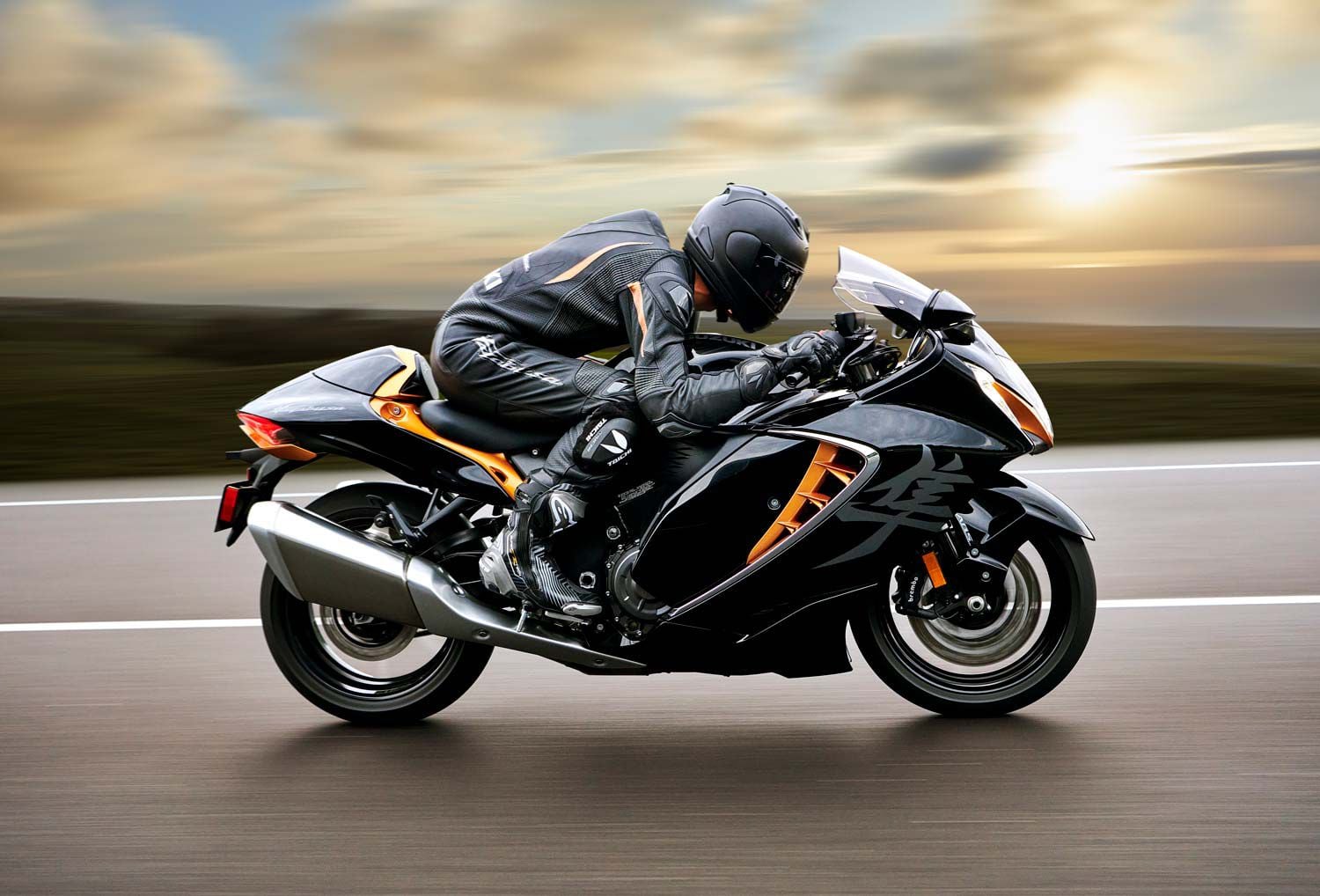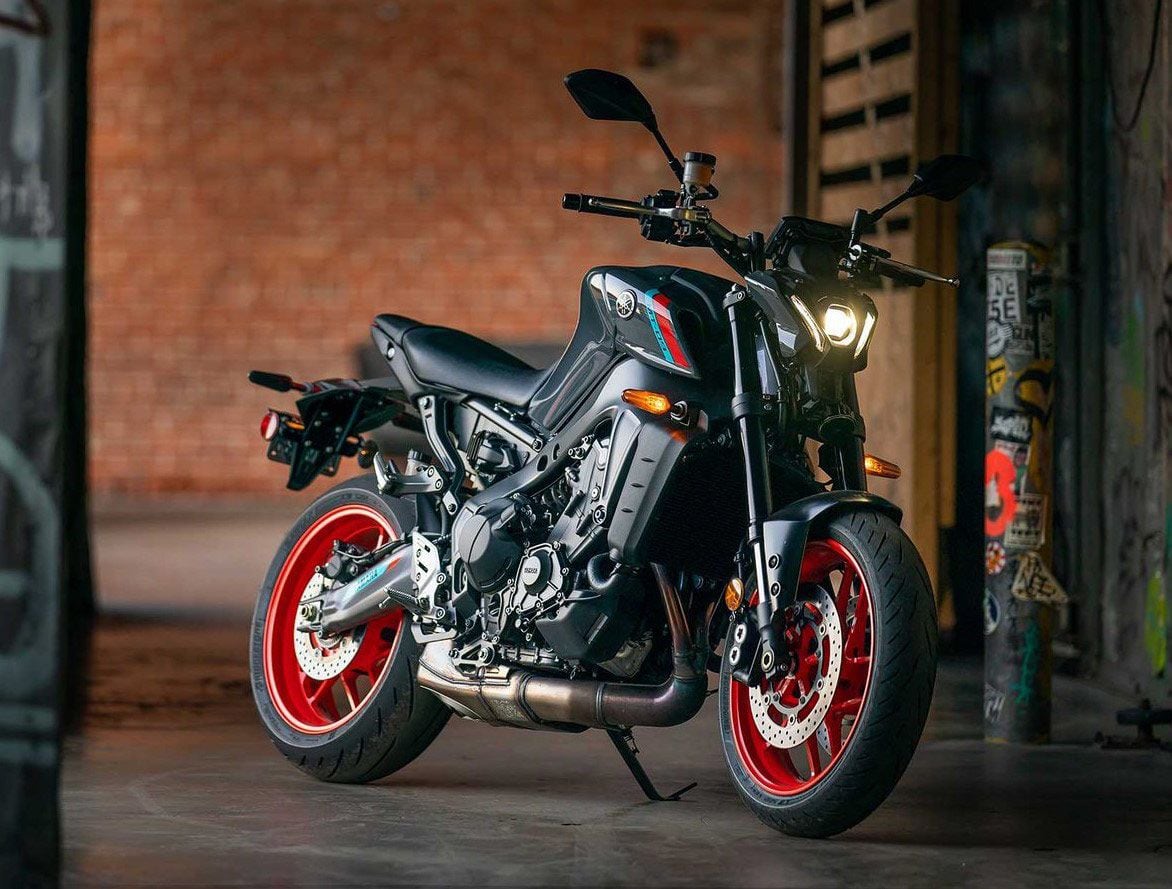Table of Contents
When it comes to motorcycling in the United States, each state has its own set of Motorcycle laws and regulations governing how riders can enjoy the open road safely and legally. California, home to some of the most scenic motorcycle routes like the Pacific Coast Highway and Big Sur, has a set of strict yet clear motorcycle laws designed to ensure the safety of riders and other road users.
In this guide, we will dive deep into the key motorcycle laws and regulations that riders need to know when cruising through California.
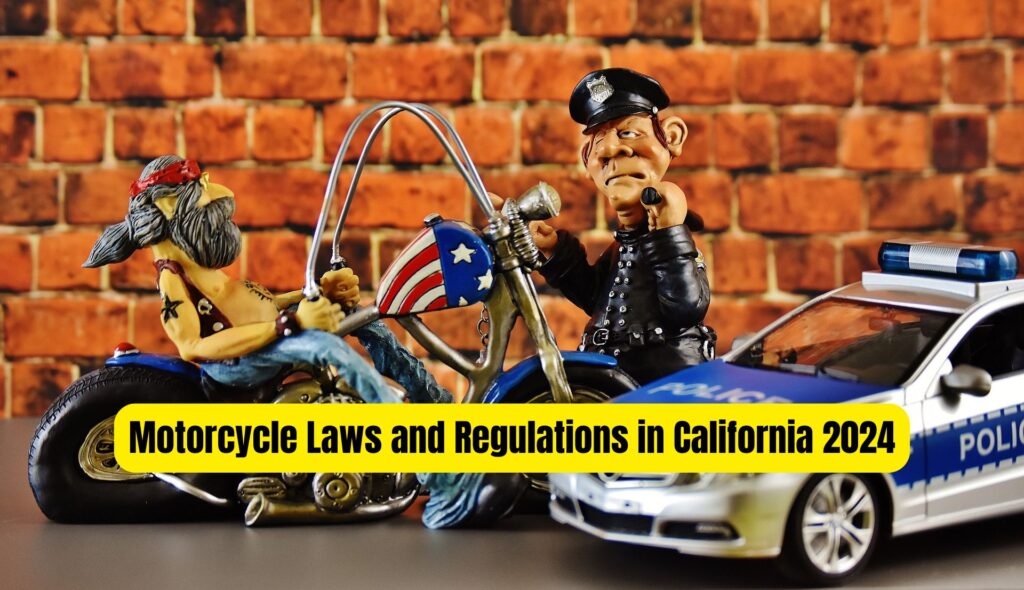
1. California Motorcycle License Requirements
Before hitting the road in California, riders must ensure they have the correct motorcycle license. The state has a structured licensing process for motorcyclists:
- M1 License: This allows you to operate any two-wheel motorcycle or motorized scooter. To get an M1 license, you must:
- Be at least 16 years old.
- Complete a motorcycle rider training course if you are under 21 years old. Riders 21 and older can take the course voluntarily, but it is highly recommended for safety.
- Pass both a written and skills test at the DMV.
- M2 License: This is for riders who only want to operate motorized bicycles, scooters, or mopeds. The process is similar, but with less stringent testing for larger motorcycles.
If you’re new to motorcycling or moving to California from another state, make sure to transfer your out-of-state motorcycle license within 10 days of establishing residency.
2. Helmet Laws in California
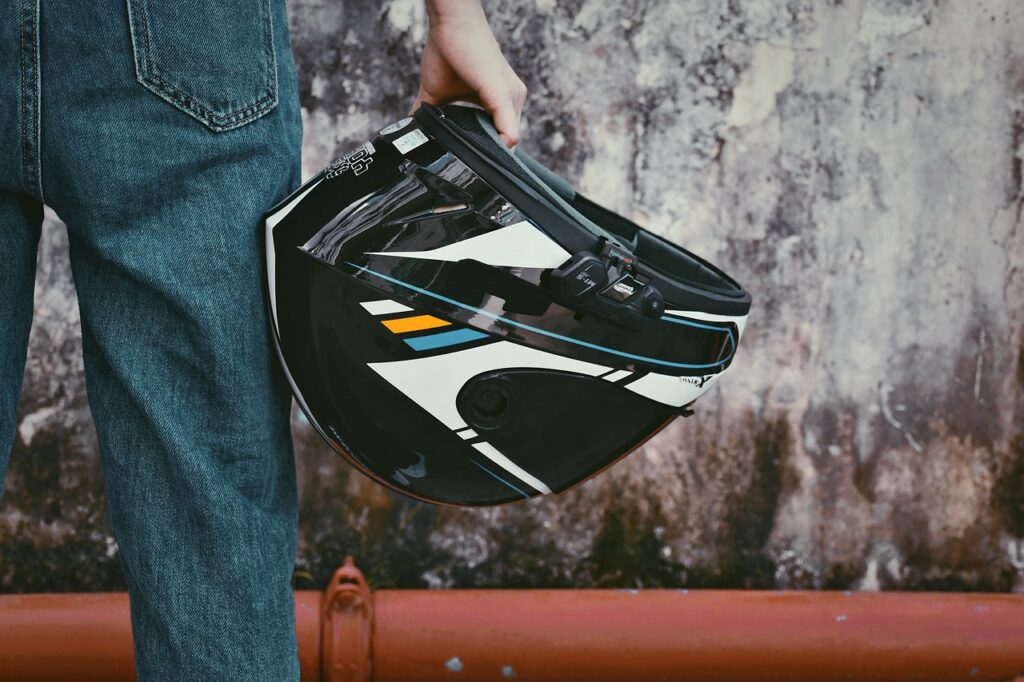
California has one of the strictest helmet laws in the country. According to the California Vehicle Code (CVC) Section 27803, all motorcycle riders and passengers must wear a helmet at all times, regardless of age or riding experience.
The helmet must meet the safety standards set by the Department of Transportation (DOT), meaning it should have the DOT sticker. Novelty helmets or those that do not offer adequate protection can result in a ticket and fines.
- Consequences of Non-Compliance: Failing to wear a DOT-compliant helmet can result in fines starting at $197 and may lead to more severe penalties for repeat offenses. It also significantly increases the risk of injury in accidents.
3. Lane Splitting: The Controversial but Legal Practice
One of the most unique aspects of motorcycling in California is the legal practice of lane splitting—riding between lanes of stopped or slow-moving vehicles. California is the only state in the U.S. that explicitly allows lane splitting, making it a major draw for many motorcyclists. However, it must be done safely.
In 2016, California Assembly Bill 51 was passed, making lane splitting legal, but with guidelines for safe practices:
- Riders should only split lanes when traffic is moving at 30 mph or less.
- It is safest to split lanes between the far-left lanes, avoiding the rightmost lanes where cars are more likely to make sudden exits or turns.
- Lane splitting at high speeds or weaving through cars recklessly can still result in fines for unsafe driving.
Safety Tip: Experts recommend that lane splitting should only be done when the speed differential between the motorcycle and other vehicles is less than 10 mph to reduce the risk of accidents.
4. Motorcycle Equipment Requirements
In California, motorcycles must meet specific equipment standards to ensure they are roadworthy. Some of the essential equipment requirements include:
- Mirrors: Motorcycles must have at least one mirror, but it’s highly recommended to have two for better visibility.
- Turn Signals: Motorcycles manufactured after 1973 must have front and rear turn signals.
- Exhaust Systems: As of 2013, California enforces strict regulations regarding motorcycle noise. The exhaust system must not exceed a certain decibel level based on the motorcycle’s model and year. Aftermarket exhausts are popular, but they must meet legal noise and emissions standards.
- Headlights: All motorcycles are required to have working headlights, and motorcycles built after 1978 must have the headlights on at all times, even during daylight.
Failure to comply with these equipment laws can result in fines, and in some cases, the motorcycle may be deemed unfit for the road until it meets the required standards.
5. Motorcycle Laws for Insurance and Financial Responsibility
California requires all motorcycle riders to carry liability insurance. The minimum liability coverage amounts are:
- $15,000 for injury or death of one person,
- $30,000 for injury or death of more than one person, and
- $5,000 for property damage.
These are the basic coverage limits, but many motorcyclists opt for additional coverage to protect themselves in case of theft, accidents involving uninsured drivers, or serious injury.
Riders must carry proof of insurance at all times. Failure to provide proof of insurance during a traffic stop or accident can result in significant fines and even suspension of your motorcycle license.
6. DUI Laws for Motorcyclists in California
Driving under the influence (DUI) laws in California apply just as strictly to motorcyclists as they do to car drivers. The legal Blood Alcohol Content (BAC) limit is 0.08%, and riding a motorcycle under the influence can have severe legal consequences.
- Penalties for DUI: First-time DUI offenders face fines, possible jail time, a suspension of their motorcycle license, and mandatory DUI education programs. Repeat offenders face harsher penalties, including longer suspensions and increased fines.
It’s important to note that even a BAC below 0.08% can result in a DUI charge if the officer believes you are impaired.
7. California’s Motorcycle Parking and Traffic Rules
Motorcyclists in California have certain parking and traffic rights, but there are also restrictions:
- Parking: Motorcycles can park in regular vehicle spaces and often in designated motorcycle parking areas. However, they cannot park on sidewalks or in bicycle lanes.
- Carpool Lanes: Motorcycles are allowed to ride in High Occupancy Vehicle (HOV) or carpool lanes, even with only one rider. This makes commuting faster and easier for motorcyclists, especially in dense urban areas like Los Angeles or San Francisco.
Conclusion: Stay Legal and Safe on California’s Roads
Understanding and following California’s motorcycle laws is crucial for staying safe and avoiding hefty fines. Whether it’s ensuring your bike has the proper equipment, following helmet laws, or responsibly splitting lanes, riding in compliance with these regulations enhances your overall riding experience.
California’s motorcycle-friendly environment, with its legal lane splitting and access to carpool lanes, makes it a haven for riders—provided they follow the law. Whether you’re a new rider or a seasoned motorcyclist, staying up-to-date on these regulations will ensure that you can enjoy the Golden State’s stunning landscapes without unnecessary legal trouble.
Frequently Asked Questions (FAQ) About Motorcycle Laws in California
Is lane splitting legal in California?
Yes, lane splitting is legal in California. It allows motorcyclists to ride between lanes of traffic, especially when vehicles are stopped or moving slowly. However, it must be done safely, typically when traffic is moving at 30 mph or less, and the speed differential between the motorcycle and other vehicles should be kept to a minimum for safety.
Do I need to wear a helmet while riding a motorcycle in California?
Yes, California has a universal helmet law. Both riders and passengers must wear a DOT-approved helmet at all times while riding. Failure to do so can result in fines and increased risk of injury in an accident.
What type of license do I need to ride a motorcycle in California?
In California, you need either an M1 or M2 license to legally operate a motorcycle. An M1 license allows you to ride any motorcycle or motorized scooter, while an M2 license is for motorized bicycles, scooters, and mopeds. Riders under 21 must complete a motorcycle safety course, while those 21 and older can choose to take the course or pass a DMV-administered skills test.
What are the insurance requirements for motorcyclists in California?
California requires all motorcycle riders to carry liability insurance. The minimum coverage limits are:
$15,000 for injury or death of one person,
$30,000 for injury or death of more than one person, and
$5,000 for property damage.
You must carry proof of insurance when riding, and failure to do so can result in fines and other penalties.
Are there any specific motorcycle equipment requirements in California?
Yes, motorcycles in California must meet several equipment standards. Some key requirements include:
At least one mirror (though two are recommended),
Working front and rear turn signals (for motorcycles made after 1973),
A DOT-approved exhaust system that meets noise and emissions standards,
Headlights that must be on at all times for motorcycles built after 1978.
Can I ride in the carpool lane on my motorcycle?
Yes, motorcycles are allowed to ride in High Occupancy Vehicle (HOV) or carpool lanes, even with just one rider. This is a significant advantage for motorcyclists in California, especially in congested urban areas.
What is the legal Blood Alcohol Content (BAC) limit for motorcyclists in California?
The legal BAC limit for motorcyclists in California is 0.08%, the same as for drivers of other vehicles. Riding under the influence can result in DUI charges, which carry severe penalties including fines, jail time, license suspension, and mandatory DUI programs. Riding with a BAC below 0.08% can also result in charges if impairment is suspected.
Can I modify my motorcycle’s exhaust system in California?
Yes, you can modify your motorcycle’s exhaust, but it must comply with California’s strict noise and emissions regulations. Aftermarket exhaust systems are popular, but they must meet legal standards for noise (determined by the model year of the motorcycle) and emissions to avoid fines.
How do I register my motorcycle in California if I move from another state?
If you move to California and bring your motorcycle with you, you must register it with the California Department of Motor Vehicles (DMV) within 20 days of establishing residency. You will need to provide proof of insurance, pass a smog check (if required), and pay the necessary registration fees.
What are the penalties for riding without a valid motorcycle license in California?
Riding without a valid motorcycle license in California can result in fines, impounding of your motorcycle, and potential suspension of your driving privileges. It’s crucial to obtain the proper M1 or M2 license before riding on public roads to avoid legal consequences.
Also Read – All New Triumph Daytona 660: A Perfect Fusion of Performance and Agility


